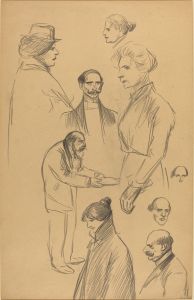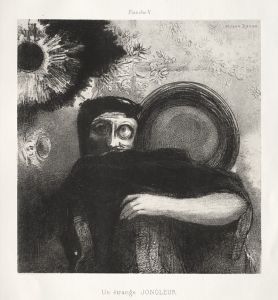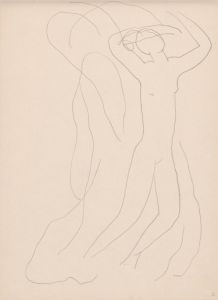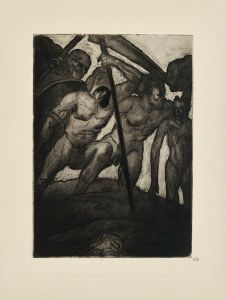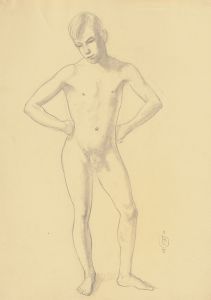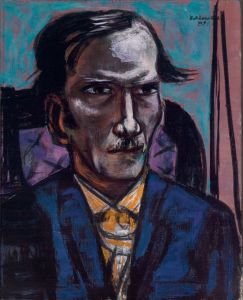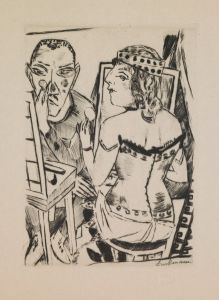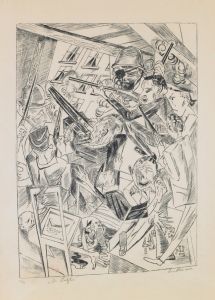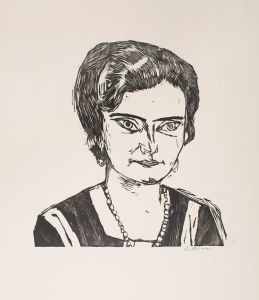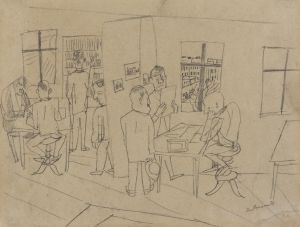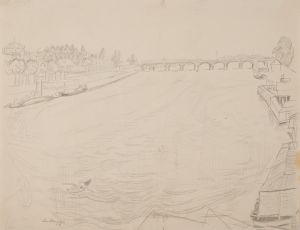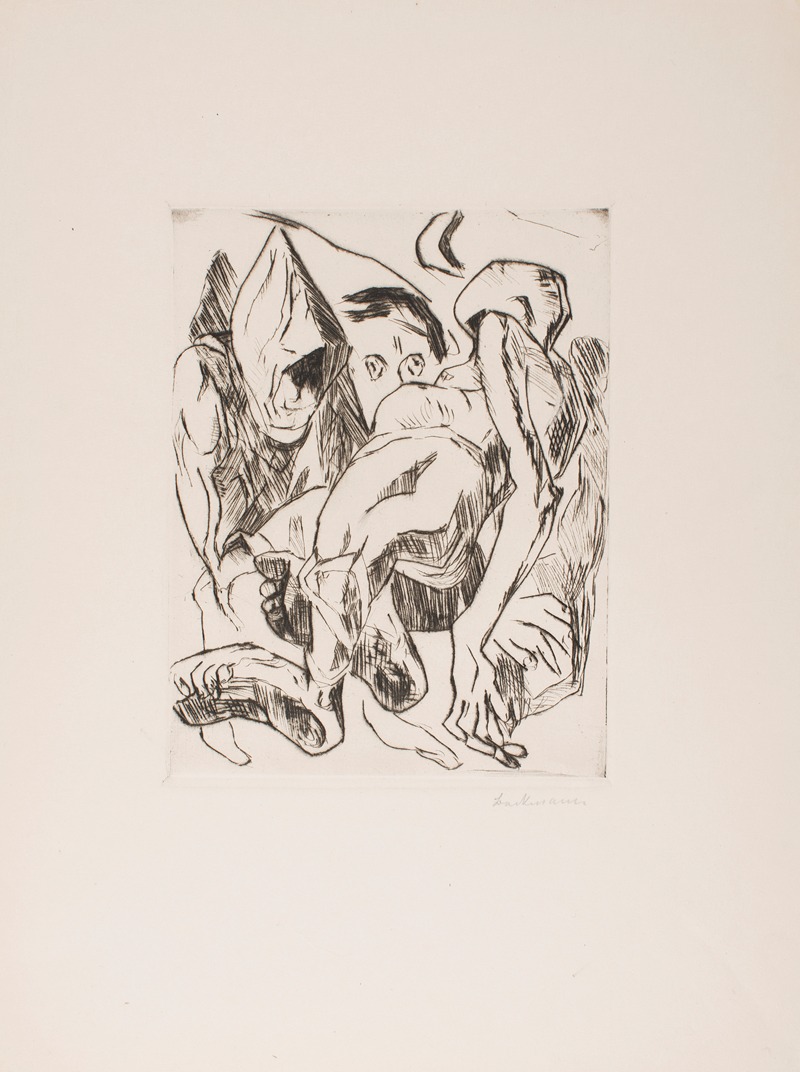
Second Illustration for Chapter 1, from the portfolio ‘The Duchess’
A hand-painted replica of Max Beckmann’s masterpiece Second Illustration for Chapter 1, from the portfolio ‘The Duchess’, meticulously crafted by professional artists to capture the true essence of the original. Each piece is created with museum-quality canvas and rare mineral pigments, carefully painted by experienced artists with delicate brushstrokes and rich, layered colors to perfectly recreate the texture of the original artwork. Unlike machine-printed reproductions, this hand-painted version brings the painting to life, infused with the artist’s emotions and skill in every stroke. Whether for personal collection or home decoration, it instantly elevates the artistic atmosphere of any space.
Max Beckmann, a prominent German painter, printmaker, and draftsman, created the artwork titled Second Illustration for Chapter 1 as part of his portfolio The Duchess. This portfolio, completed in 1918, is a series of lithographs that reflect Beckmann's exploration of themes such as human emotion, societal structures, and existential questions. The portfolio was inspired by the novel The Duchess of Malfi by John Webster, a Jacobean tragedy that delves into themes of power, corruption, and human suffering.
Second Illustration for Chapter 1 is one of the ten lithographs in the series. Beckmann's work during this period is characterized by his transition from traditional academic styles to a more modernist approach, influenced by the trauma of World War I and his personal experiences as a medical orderly during the conflict. This shift is evident in the stark, expressive lines and the dramatic, almost theatrical composition of the lithograph. The portfolio as a whole reflects Beckmann's interest in literature and his ability to translate complex narratives into visual form.
The lithograph, like others in the series, employs a monochromatic palette, emphasizing contrasts between light and dark to create a sense of depth and intensity. Beckmann's use of line and shading conveys a sense of tension and unease, which aligns with the themes of the source material. The figures in the artwork are rendered with a combination of realism and abstraction, a hallmark of Beckmann's style during this period.
The portfolio The Duchess was created during a time of significant upheaval in Europe, and Beckmann's work is often interpreted as a response to the societal and personal turmoil of the era. While the specific narrative details of Second Illustration for Chapter 1 are tied to the broader context of the portfolio, the artwork stands as a testament to Beckmann's skill in capturing the psychological and emotional dimensions of his subjects.
Today, Second Illustration for Chapter 1 and the other works in The Duchess portfolio are considered important examples of Beckmann's early printmaking and his development as an artist. These works are held in various museum collections and continue to be studied for their artistic and historical significance.






